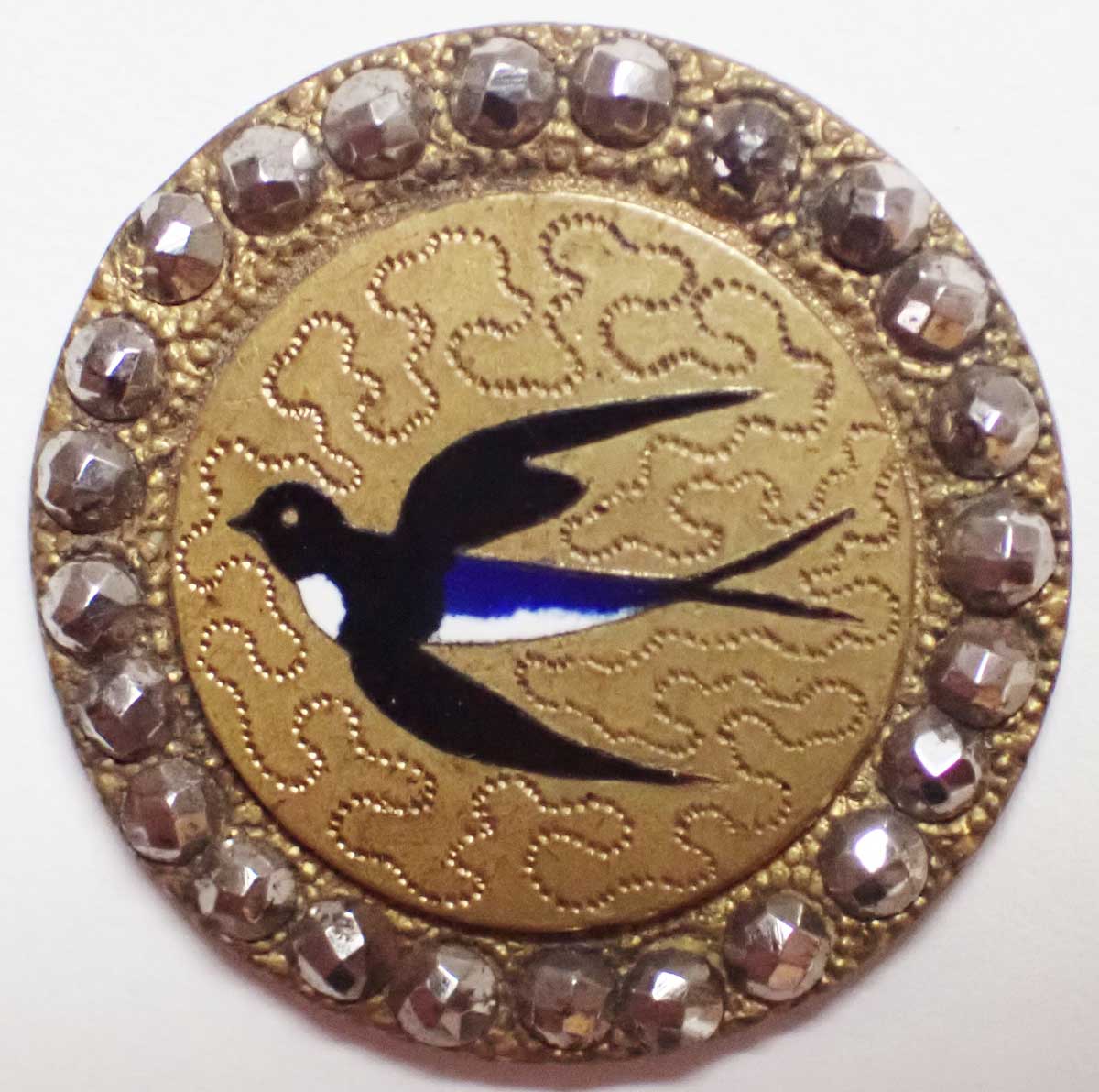August 2024
SMACK DAB IN THE MIDDLE
All buttoned up – Examining a fashion staple
by Donald-Brian Johnson
OK, gang. Today’s topic: buttons!
Not push buttons. Not campaign buttons. Not even Bachelor Buttons.
Nope. We’re talking honest-to-goodness button buttons. The kind without which your shirt would be flapping open and your overcoat blowing in the wind.
Those kind of buttons have been with us since ancient times. Buttons have been dug up on archeological expeditions in Egypt and Greece. Sculptures and coins dating back to the eighth century depict personages tidily buttoned up at neck and sleeve. Paintings from the Renaissance onward show their subjects in garments fashionably festooned with buttons.
Once a button served its utilitarian purpose, it was artistry’s turn. Over the centuries, a parade of possibilities has captivated button-makers and button-wearers. Among the many media employed in button creation: silver, steel, copper, brass, pewter, ivory, horn, wood, porcelain, china, ceramic, glass, carved pearl, shell, cloth, leather, and such 20th-century latecomers as celluloid, Bakelite, plastic, Lucite, and rubber. Some buttons were studded with, or formed from, real or rhinestone gems. Others featured enameled designs or reverse paintings. Sometimes the button illustrations were embroidered or done on paper, ivory, or silk, then captured under glass. Until the dawn of the Industrial Age, buttons were hand-made, fragile, and costly.
In the 1700s, buttons were a man’s game. Anything that could be buttoned was. There were decorative buttons of all sizes on waistcoats, cloaks, sleeves, and pockets. By the mid-1800s, though, men’s clothing had become less flamboyant, and ladies ruled button fashion. Thanks to mass manufacturing, extravagantly-styled buttons came within reach of almost every pocketbook.
Particularly popular were “picture” buttons, many of stamped metal, celebrating a variety of subjects. Among them: children, animals, birds, insects, angels, flowers, sporting activities, and characters from favorite stories and fables.
Fashion trends of the time were often dictated by the doings of the famous. After Queen Victoria’s husband died in 1861, her entire wardrobe, including buttons, was transformed overnight to unrelieved black. Victorian fashionistas quickly embraced that idea, and “Jet” buttons, originally fabricated from fossilized driftwood, but later from less expensive black glass, became the rage.
With the 20th century introduction of plastics, buttons could be created in almost any shape, and were. Why settle for a button with just a painting of a horse on it? If you loved horses, the winning ticket was a button which recreated a horse in full gallop.
For the beginning “button-eer,” the question is: where to start? For some collectors, the passion begins with a search for buttons just like the ones that populated Grandma’s sewing basket. For others, it’s a theme. You like dogs, and you like buttons. What you’re on the hunt for is an easy choice. Some folks are into the material used: if you adore Bakelite, but your jewelry box is already stuffed with Bakelite bracelets, the next step might be Bakelite buttons.

A button featuring an enamel engraved swallow, encircled by a faceted steel border. Late 19th century. (Image courtesy of Mitzi Lovell, Lisa Schulz, and Shareen Martin. Photo Associate: Hank Kuhlmann)
A favorite button subset: uniform buttons. Full regiments of military buttons exist, but many other occupations also boast specific uniform buttons. Railroad conductors, airline pilots, ship captains, and those serving in police and fire departments, are just a few whose uniform buttons proclaim their chosen professions. Boy Scouts, Masons, Odd Fellows, and a multitude of other social groups and societies also boasted uniform buttons heralding their heritage.
One of the nicest things about button collecting? It’s affordable. Buttons generally start at about a quarter apiece. Of course, the prices go up from there, based on a button’s age, material, subject, and rarity. Buttons from the 1700s and earlier, for instance, are extremely hard to locate, and prices can trot up into the thousands. Fortunately, mass production means that many beautiful buttons, from as far back as the 19th century, remain relatively inexpensive today. Even those “Jet” black glass buttons, favored by fans of Queen Victoria, are still a buy, since so many were produced.
“Buttons, buttons, who’s got the buttons?’
Button collectors, that’s who. And they couldn’t be happier.
Information on button clubs and their activities can be accessed at the National Button Society website: www.nationalbuttonsociety.org. The group’s annual convention is set for August 8-10, 2024, in Appleton, WI.

